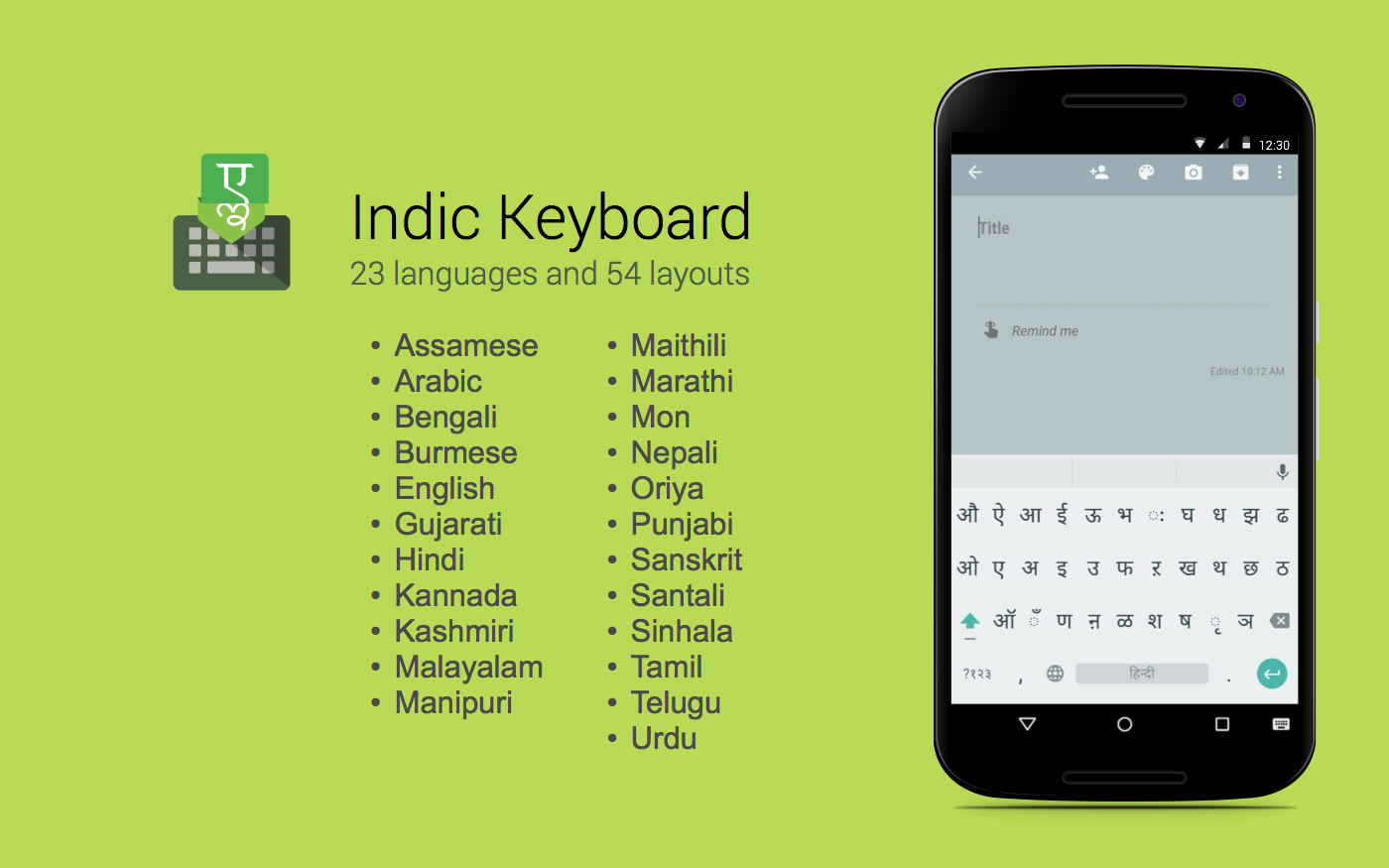SMC Newsletter: Jan-Feb 2025
SMC Domain Outage and FixOur domain smc.org.in is registered with Gandi.net. On

Inspired by the large number of downloads and valuable feedback provided by our users, we bring you version 2.0 of Indic Keyboard.

Give the application a 5 Star rating on Play store if you like it.
Indic keyboard supports Android version 4.1 and above (Jellybean, Kitkat and Lollipop). If you can see your language in its native script below you should be able to install and use it.
Some phones may not support all the languages listed since the phone's maker shipped fonts only for some of these languages. Even then, rendering for some of the languages is not perfect on Android
Indic keyboard has a wizard that will walk you through the process of setting it up so that you can use it comfortably.
Since the code base was updated, you'd have to configure your preferred language again.
This warning message is a part of the Android operating system. It will appears whenever you try to enable a third party keyboard. We don't collect any data.
Indic keyboard provides multiple "keyboard layouts". This means that you will have different ways to type in your native language.
Transliteration allows you to type out words using English characters, but will automatically transform the words to your native language. For example, if you type "namaste" in English while using Devanagari transliteration keyboard, it will transform it to नमस्ते correctly.
Inscript layout is the standardized keyboard that Government of India came up with to cater for the majority of the languages in India. We support the full specification, and if you are already familiar with Inscript on your Desktop, it will work on the phone too.
Phonetic keyboard is similar to Transliteration scheme - you can type what the words sound like using English characters and it will be automatically transformed into your language.
Compact Keyboard allows to type Indian languages without the shift key. You can long press on the letters to get more options.
Other layouts are specific to the languages - do try them out.
Indian language support in mobile devices is a major segment that helps India to bridge its vast digital divide .The growth of Mobile devices and smart phone market already proved it is the the best way available at this point to bridge digital divide.As per VNI report from Cisco, in India, Smartphones will account for 40% (651.4 million) of all networked devices in 2019, compared to 13% (139.8 million) in 2014. It is pretty clear that unlike most other countries, India will be a “mobile-first” country because the first computing device for most Indians will be the mobile and not the PC. This is the importance of Indian language support on mobile devices.
Unavailability of Indian Language interfaces, keyboards and fonts limits freedom of expression of people in their native languages and prevents them from tapping the full potential offered by these devices. Indian language support in Mobile devices enables people's access to Indian language knowledge repositories, e-governance services and help freedom of expression in their native languages, a fundamental right assured by the constitution.
The Indic Keyboard project was conceived by the Indic project, an initiative of Swathanthra Malayalam Computing. It is a part of the effort for digital inclusion on the mobile frontier. A keyboard will enable native Indian Language Internet consumers to express themselves in their native language using their choice of layout. In the past one year, Indic Keyboard project has become the biggest collection of Indian Language Layouts suitable for mobile devices, updated and maintained by the community. This is the reason it is a people first, community driven project. The end result is a well tested, high quality implementation of Indian language input mechanisms.
We realized that our involvement actually matters when we noticed heavy adoption rate for the previous version with more than 168K downloads. The high quality user feedback helped us with feature additions, improvements and bug fixes
Nope. We will continue to work towards lowering the language barrier on mobile devices with respect to Indian languages. We will expand the language coverage by engaging with language communities in coming days.
We invite mobile manufacturers and integrators for partnerships. We have been bringing Indian languages to Mobile, Desktop and Web platforms for more than ten years. Let us work together for enabling Indian Mobile users to explore and express in their own language. Email us at : contact@smc.org.in
Government of India's Department of IT R & D project undertaken by ICFOSS funded the implementation of Mobile Compact Layout and Lollipop AOSP support. Another small aid from ICFOSS via Kerala Govt Sources enabled addition of Swanalekha Layout (beta) and maintenance and updates on existing Malayalam Layouts.
Kannada Anysoft keyboard layout was funded via Bounty Source by Thejesh GN
Jishnu Mohan contributed most of the features and updates.
Anoop P Contributed Swanalekha Layout(beta) and converted java-morelangs module to an Android library.
Sridhar Contributed Kannada Anysoft Keyboard layout.
Hiran Venugopalan contributed Graphic Assets for the project and helped with re-branding 2.0 version.
Anivar Aravind helped with project management.
Indic Project community members (Akshay, Balasankar, Ashik, Santhosh ) contributed documentation.
Many keyboard layouts were adapted from the jquery.ime project of Wikimedia Foundation. They were contributed by volunteers.